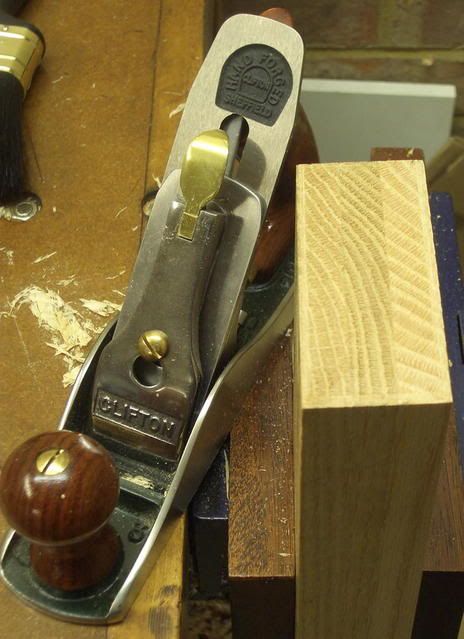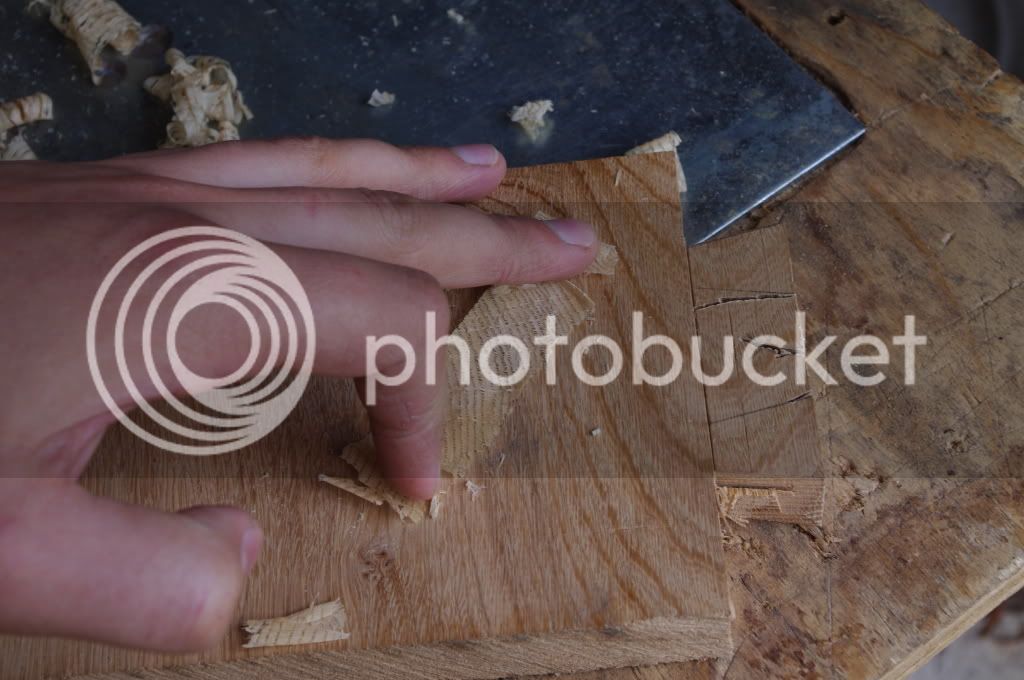Jacob
What goes around comes around.
No. Try setting the blade right back so it doesn't cut at all - then go through the motions. Does the plane catch as the mouth passes the start of the board?LuptonM":n3lxh9cc said:...
Should engaging with the wood with the blade intitally be very hard (I am applying most of the pressure to the front knob)?
If yes then you could have the frog screws too tight, which will press the sole down behind the mouth - have a look at the frog and how it is fixed; you will see how it pivots.
But you don't necessarily start a cut at the end of the board - you are trying to flatten it so you should be planing the high points. Have a squint along the board. Is it bowed higher in the middle? If so, set the blade down again and concentrate on taking the top off the high point. Scribble pencil all over the board and you can see what effect you are having as you plane.
And so on - looking and thinking as you go.




































